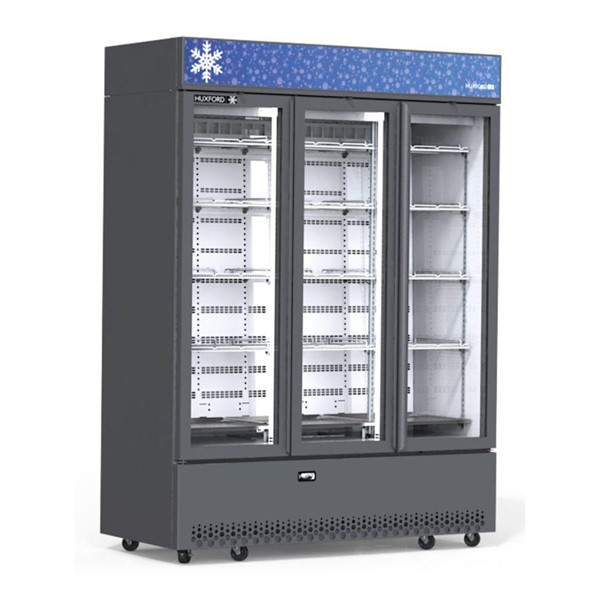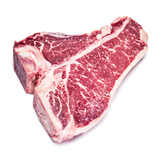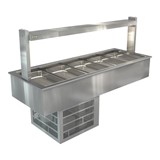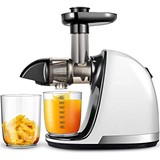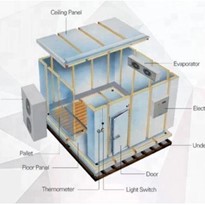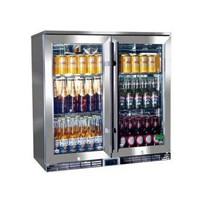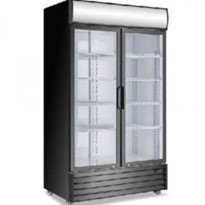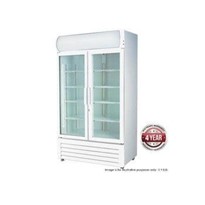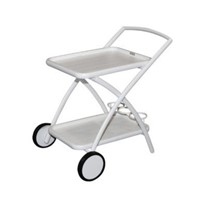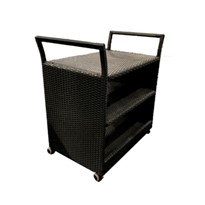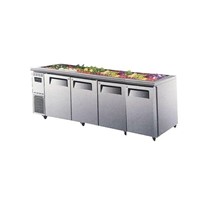Commercial glass door fridges, also referred to as display fridges obviously have glass doors. Glass does not have the same insulating properties as a combination of plastic/insulation/steel which a solid door fridge is usually manufactured from (such as domestic fridges or commercial storage fridges). Be wary as the way these drinks only fridges are marketed by distributors and middlemen, as they can intentionally be misleading.
Usually business owners will navigate fridge pricing and buy the significantly cheaper fridge, not alert to the fact that this is often a “drinks only” fridge. The majority of commercial fridge manufacturers can make a “drinks fridge” easily because all it needs to do is make drinks “cold”. When you start storing meat, seafood, milk or other foods in a drinks fridge you start to put your customers health and well-being at risk if the fridge isn’t up to the task. You also significantly shorten the life span of the food or beverages. The technology required to make a commercial display food fridge is more complex than just a drinks fridge (although quality food fridges can be programmed for drinks only to save the owner electricity costs).
Cold dependant foods (high risk foods) like milk, meat, seafood, etc, should be stored between 0-5°C and not higher. Drinks and/or beverage fridges can operate up to 12°C, and in some cases the temperature is actually being read from the cooling air entry point to the fridge – which might give the appearance of working fine. The reality is that some foods depending on where they are stored in a drinks fridge (or poor airflow fridge) could be reaching temperatures up to three times higher than recommended.
Not to mention usually drinks fridges are cheap for a reason - because they are made from cheap components and parts. They don’t have to work hard so seem to run fine until put under pressure by heavy use or environmental conditions such as heat and humidity. Most cheap drink fridges don’t meet basic Australian Government MEPS (minimum energy performance standards) legislation energy requirements and are often suitable for use only in cool (air conditioned) environments. The simply can’t compete in the heat.
You don’t have to look far to find drinks only fridges being used for food storage. So if your shopping for a food fridge unless it clearly states that it is suitable for food with a temperature range of 0-5°C and that it complies with MEPS you should be wary. We are also consumers and we don’t want to buy produce that will spoil before its marked that it is due too.
Our mission here at Huxford Refrigeration is to educate our customers so they can make the right decisions. It is our opinion that the commercial display merchandising refrigerator and freezer is one of the most critically important assets when it comes to cold food storage and merchandising. Not only for the safety and well-being of your customers but for the continued success of your business.
Huxford Refrigeration recommends regular maintenance from qualified refrigeration mechanics. Commercial display refrigerators and freezers (similar to cars) have moving parts and fail more dramatically and expensively if they have never been serviced. Consult your operation or instruction manual for more information on preventative maintenance, cleaning and cost saving procedures you can perform. For safety always turn off and unplug a refrigerator or freezer if you are cleaning or working on it. Never perform electrical or refrigeration work unless you are qualified to do so.


